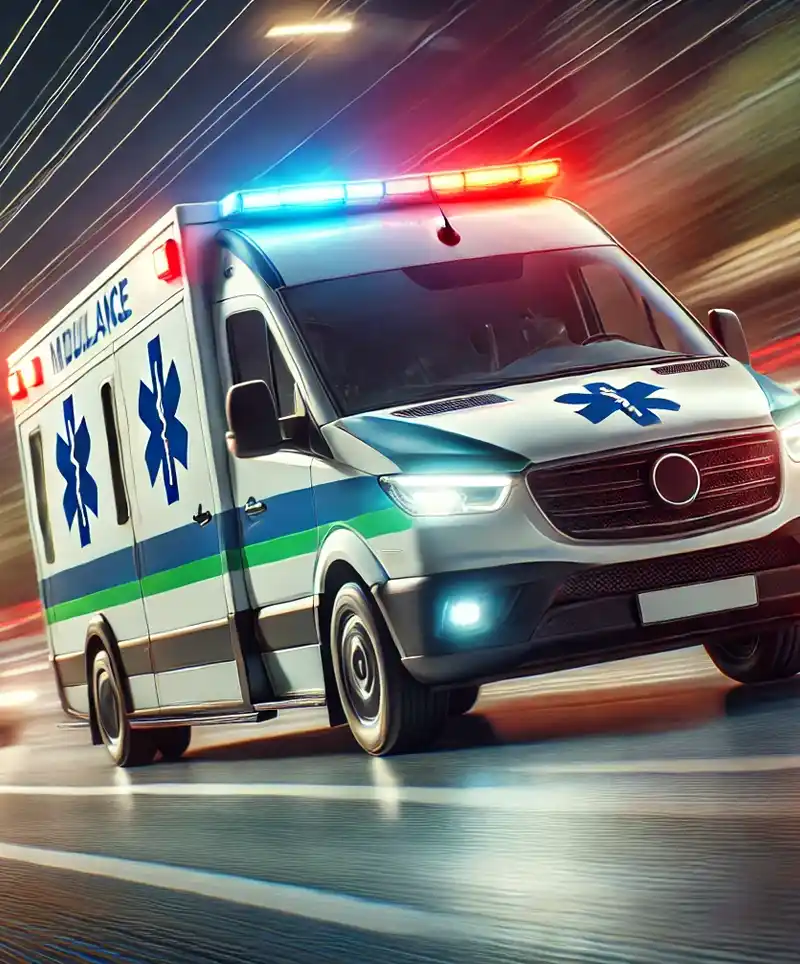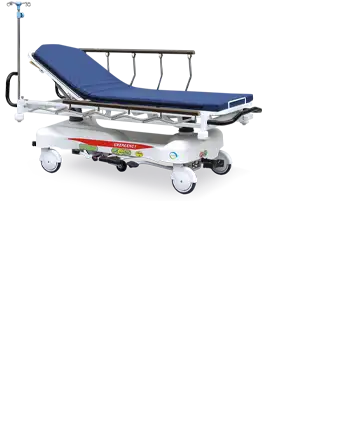Honoring the Lifesavers on Wheels
When we think about lifesaving heroes, our minds often go straight to doctors, nurses, and surgeons. But there’s another group of professionals who are just as critical in the chain of survival—medical transporters. These are the people who arrive when the situation is dire, bringing not just patients, but hope, to the hospital doors. On International Day of Medical Transporters, we honor these unsung heroes whose quick actions and skilled care make all the difference in life-threatening situations.
The Role of Medical Transporters
Medical transporters, often referred to as paramedics, EMTs (Emergency Medical Technicians), or ambulance drivers, play a crucial role in the healthcare system. They are the first responders who assess, stabilize, and transport patients to medical facilities, often under incredibly challenging conditions. Whether it’s a heart attack, a car accident, or a medical emergency at home, these professionals are trained to provide immediate care and ensure that patients reach the hospital as quickly and safely as possible.
 Their job doesn’t end with just driving an ambulance. Medical transporters are highly trained to handle a wide range of medical emergencies. They administer life-saving treatments on the spot, such as CPR, defibrillation, and medication administration. They monitor vital signs, manage airway obstructions, and control bleeding. Their ability to make quick decisions under pressure can mean the difference between life and death.
Their job doesn’t end with just driving an ambulance. Medical transporters are highly trained to handle a wide range of medical emergencies. They administer life-saving treatments on the spot, such as CPR, defibrillation, and medication administration. They monitor vital signs, manage airway obstructions, and control bleeding. Their ability to make quick decisions under pressure can mean the difference between life and death.
The History of Medical Transport Services
The concept of medical transport has evolved significantly over the centuries. The earliest form of organized medical transport can be traced back to the Napoleonic Wars, where the French army developed the "flying ambulance," a horse-drawn carriage designed to quickly evacuate wounded soldiers from the battlefield. However, it wasn’t until the 20th century that modern ambulance services began to take shape.
In the early 1900s, hospitals and municipalities started to develop motorized ambulances, improving response times and the quality of care provided during transport. The establishment of the first formal training programs for ambulance personnel in the 1960s marked a turning point, leading to the development of the EMT and paramedic professions. These advancements have made modern medical transport services an integral part of emergency care.
The Impact of Medical Transporters
The impact of medical transporters on patient outcomes cannot be overstated. In emergencies, every second counts, and the swift response of a trained medical transporter can dramatically improve a patient's chances of survival. For those who have experienced a medical emergency—like a heart attack—the arrival of an ambulance is often a moment of profound relief, knowing that help is at hand.
For the patient, the journey in an ambulance is often a blur of sirens, flashing lights, and medical procedures. But for the medical transporters, it’s a well-coordinated effort to stabilize the patient and get them to the hospital in the best possible condition. This can involve working in cramped spaces, managing advanced medical equipment, and communicating with hospital staff to ensure a seamless transition of care.
The Challenges of the Job
Being a medical transporter is not for the faint of heart. The job comes with significant challenges, both physical and emotional. Transporters often work long, irregular hours, responding to emergencies at all times of the day and night. They face exposure to trauma, illness, and the elements, often working in difficult or dangerous environments.
 The emotional toll can also be significant. Medical transporters are frequent witnesses to suffering and loss, and while they do everything in their power to save lives, not every story has a happy ending. Despite this, they must remain focused and composed, providing care with compassion and professionalism.
The emotional toll can also be significant. Medical transporters are frequent witnesses to suffering and loss, and while they do everything in their power to save lives, not every story has a happy ending. Despite this, they must remain focused and composed, providing care with compassion and professionalism.
Training and Qualifications
To become a medical transporter, one must undergo rigorous training. EMTs typically complete a course that covers basic life support skills, including CPR, wound care, and patient assessment. Paramedics undergo even more extensive training, which includes advanced life support techniques, pharmacology, and medical procedures such as intubation and intravenous therapy.
In addition to technical skills, medical transporters must develop strong problem-solving abilities, quick decision-making skills, and the capacity to remain calm under pressure. Continuous education and training are essential, as the medical field is constantly evolving with new technologies and protocols.
The Importance of Recognition and Support
While the work of medical transporters is invaluable, it is often underappreciated. These professionals work tirelessly behind the scenes, rarely seeking the spotlight. International Day of Medical Transporters is an opportunity to recognize their contributions and express gratitude for their dedication to saving lives.
For those who have benefited from the care of medical transporters, like myself, during a heart attack, this day is also a time to reflect on the critical role they played in our survival. Without their swift response and expert care, many outcomes would be far different.
It’s also a reminder of the importance of supporting these professionals, both in terms of fair compensation and mental health resources. The demands of the job are immense, and ensuring that medical transporters have the support they need is crucial to maintaining a strong emergency medical system.
How to Celebrate International Day of Medical Transporters
There are many ways to celebrate and honor medical transporters on their special day:
- Express Gratitude: If you’ve ever been helped by a medical transporter, consider reaching out to express your thanks. A simple message of gratitude can mean a lot to someone who works tirelessly to save lives.
- Support Local Services: Many ambulance services and paramedic teams rely on community support. Consider making a donation or volunteering your time to help these essential services continue their work.
- Spread Awareness: Use social media to raise awareness about the importance of medical transporters. Share facts, stories, or just a message of thanks to help others understand the vital role these professionals play in our healthcare system.
- Advocate for Better Resources: Support initiatives that aim to improve working conditions, mental health resources, and funding for medical transport services. Advocacy can make a big difference in the lives of those who save lives.
Medical transporters are the lifeline in times of crisis. They are the first to arrive when every second counts, providing critical care and comfort to those in need. On International Day of Medical Transporters, we recognize and celebrate these heroes who work tirelessly to ensure that patients receive the best possible care, often in the most challenging circumstances.
For those of us who have received their care, this day is particularly meaningful. It’s a chance to reflect on the moments when we needed help the most and to give thanks for the skilled professionals who answered the call. As we honor them today, let’s remember that their work is not just about getting patients to the hospital—it’s about saving lives, one journey at a time.
Please Share our Content






 Their job doesn’t end with just driving an ambulance. Medical transporters are highly trained to handle a wide range of medical emergencies. They administer life-saving treatments on the spot, such as CPR, defibrillation, and medication administration. They monitor vital signs, manage airway obstructions, and control bleeding. Their ability to make quick decisions under pressure can mean the difference between life and death.
Their job doesn’t end with just driving an ambulance. Medical transporters are highly trained to handle a wide range of medical emergencies. They administer life-saving treatments on the spot, such as CPR, defibrillation, and medication administration. They monitor vital signs, manage airway obstructions, and control bleeding. Their ability to make quick decisions under pressure can mean the difference between life and death. The emotional toll can also be significant. Medical transporters are frequent witnesses to suffering and loss, and while they do everything in their power to save lives, not every story has a happy ending. Despite this, they must remain focused and composed, providing care with compassion and professionalism.
The emotional toll can also be significant. Medical transporters are frequent witnesses to suffering and loss, and while they do everything in their power to save lives, not every story has a happy ending. Despite this, they must remain focused and composed, providing care with compassion and professionalism.








 "Sláinte!" is a traditional Irish expression used as a toast, equivalent to "Cheers!" in English.
"Sláinte!" is a traditional Irish expression used as a toast, equivalent to "Cheers!" in English.